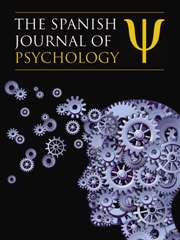Article contents
Mental Workload and Visual Impairment: Differences between Pupil, Blink, and Subjective Rating
Published online by Cambridge University Press: 10 April 2014
Abstract
This research has two aims: (a) To study the concurrent validity of three measures of mental workload, NASA TLX rating scale, pupil dilation and blink rate, testing the hypothesis that they will provide convergent results using a single-task, and dissociative results for dual-task; and (b) To analyse their capability to predict visual search impairment. These three measures were analyzed in the same cognitive tasks in single-task and dual-task (cognitive task and visual search) conditions in a within-subjects experiment with twenty-nine participants. Mental workload measures showed concurrent validity under single-task condition, but a complex pattern of results arose in the dual-task condition: it is suggested that NASA TLX would be a subjective addition of the rating of each task; pupil dilation would measure the average arousal underlying the cognitive tasks; and the blink rate would produce opposite effects: whereas mental workload of cognitive tasks would increase blink rate, visual demand would inhibit it. All three measures were good predictors of visual impairment. The soundness of these measures is discussed with regard to the applied field of driving and other activities.
Este experimento tiene dos objetivos: 1) Estudiar la validez concurrente de tres medidas de carga mental, la escala de juicios NASA TLX, la dilatación de la pupila y la tasa de parpadeo, poniendo a prueba la hipótesis de que, en situaciones de tarea única, arrojan resultados convergentes, pero, en doble tarea, arrojan resultados disociativos. 2) Analizar su capacidad para predecir el deterioro en la búsqueda visual. Las tres medidas fueron analizadas con las mismas tareas cognitivas realizadas en condiciones de tarea simple y de doble tarea (tarea cognitiva y búsqueda visual) en un experimento intrasujetos con veintinueve participantes. Las medidas de carga mental mostraron validez concurrente en las condiciones de tarea única, pero en las condiciones de doble tarea apareció un patrón de resultados complejo que sugiere que NASA TLX consistiría en la adición subjetiva de los juicios de cada tarea; la dilatación de la pupila mediría la activación promedio que subyace a las tareas cognitivas; y la tasa de parpadeo produciría efectos contrapuestos: mientras que la carga mental de las tareas cognitivas incrementa la tasa de parpadeo, las demandas visuales la inhiben. Las tres medidas fueros buenos predictores del deterioro visual. Se discute la justificación del uso de estas medidas en el campo aplicado de la conducción y otras actividades.
Keywords
Information
- Type
- Articles
- Information
- Copyright
- Copyright © Cambridge University Press 2008
References
- 141
- Cited by

